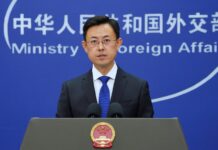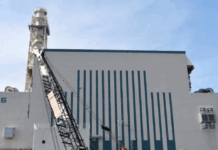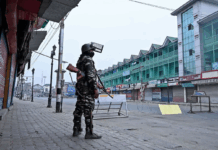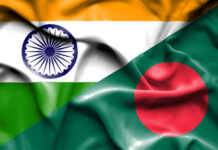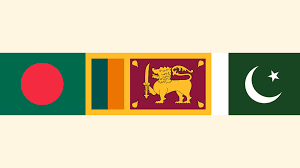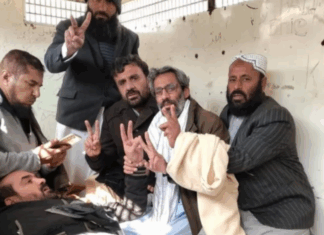The South Asian Island nation of Sri Lanka is currently going through an extreme economic crisis. Foreign exchange reserves have fallen so low that school examinations have been put off indefinitely due to a lack of imported paper. In addition to cooking gas, there has been a shortage of kerosene or petrol. Blackout has started due to a lack of electricity.
The situation is so dire that due to inflation, high unemployment, and shortages of almost all necessities, many Sri Lankans are fleeing their country in the hope of a better life abroad. Countless Sri Lankans are now being forced to do something other than their main occupation as not everyone can afford to leave the country. Or living an inhuman life. The suffering of the people of that country is coming up in the world media.
The country has never been in such a bad situation since independence in 1947. To cope with the situation, the Sri Lankan government has asked for a new loan of $1.5 billion from neighboring India. When Sri Lanka faced problems, Bangladesh provided $250 million in currency assistance for the first time. This was the first loan from Bangladesh for any country. They again asked for a loan from Bangladesh. Besides, they have been repaying loans of different countries through the exchange of goods.
Sri Lanka was quite capable of human resources and internal prosperity. Then why their situation? In this regard, economic analysts have brought forward various factors, from which different countries can learn lessons in their current and future plans.
Sri Lanka has undertaken several mega projects in their country for more than a century. These include seaports, airports, roads, and other projects that are currently considered unnecessary and redundant. Different governments of Sri Lanka have taken loans from different sources at home and abroad. As a result, their foreign exchange reserves gradually run out. According to the country’s economists, there has been little foreign direct investment in Sri Lanka in the last 15 years. Instead of foreign investment, various governments have focused on borrowing.
The country’s government has issued sovereign bonds since 2007 to raise money. This type of sovereign bond is sold when the expenditure is more than the income of a country. Such bonds are sold in the international capital market to raise money. That is what Sri Lanka has done. But it did not give much thought to how the money would be paid. At present, Sri Lanka has a debt of $12.5 billion for that bond alone. Besides, the government has also borrowed from domestic sources.
The once-self-sufficient country is also in dire straits due to tax cuts, reduced income from tourism remittances, and unplanned decisions in agriculture. Different countries including Bangladesh have to learn from this situation. The world economic situation has begun to change rapidly since the Russia-Ukraine war, at which time any country could fall into a new crisis. Although Bangladeshi foreign exchange reserves are in a good position so far, the situation in Sri Lanka can be kept in mind in future state plans. At the same time, we are hopeful that friendly Sri Lanka will soon be able to return to normalcy with the help of various countries and organizations around the world.
Successful statesman PM Sheikh Hasina Wazed has achieved full potential to move from a least developed country to a developing country. It has been possible because of hard-working, strong leadership. Political stability, the flow of FDI, empowerment of women, unique poverty alleviation model, inclusivity of economy, and so on.
On the other hand, the economy of Pakistan is in turmoil. Pakistan is in debt, amounting to $130 billion. At the same time, inflation seems to have picked up speed (12 percent). Over the past three years, Pakistan’s progress has stalled.
The recent political instability has created a crisis in Pakistan. The recent political unrest has shaken the business and industrial sectors. The country’s economy is already fragile due to the depreciation of the rupee, declining reserves, rising commodity prices, and revenue shortfalls.
Not only has the currency depreciated, but the wheel of Pakistan’s economy has slowed down over the past three years. The recent political unrest has shaken the business and industrial sectors. The instability in Pakistan’s politics is showing no signs of abating anytime soon. A few days before the fall of the government, it affected the economy. The Pakistani rupee is depreciating. Never in the history of Pakistan has the rupee depreciated so much against the dollar.
The biggest challenge for Imran Khan’s government was the economic crisis and he claimed that he would change the country’s economy. He wouldn’t go to the IMF, reduce debt, and bring down inflation.
During his tenure, there has been an increase in the amount of debt, ranging from inflation, to a record fall in the value of the Pakistani currency, with the finance minister being changed three times. According to Prime Minister Imran Khan, despite the improvement in the economic situation, the coronavirus epidemic broke out and global inflation soared.
On the other hand, the small size of Bangladesh is currently a wonder of development. The implementation of big projects is now just a matter of time. City facilities have also been ensured in the villages. Flyovers are visible on most of the roads in the capital. Metrorail will be launched in a few days. The long Padma bridge is not a dream now, it is real. Economists speculate that the GDP growth rate could rise to one percent because of the bridge. This bridge has given new hope to the people of the south. The implementation of such a project with the government’s own funding was at one time unimaginable. The country is moving forward with a sound plan.
The present government in Bangladesh has shown great prudence and foresight in the progress of Bangladesh. For this reason, there is nothing to be afraid of in seeing the situation of any oher country as a nightmare. For example, the mega project Padma Bridge and Metrorail utility and how much is already known to everyone. 100 economic zones are being formed. Investment is coming from different countries. Foreign exchange reserves are adequate ($45 billion in January 2022), and remittances are satisfactory. It can be said that every economic foundation of Bangladesh is still in a strong position.
During the coronavirus pandemic, the Sri Lankan tourism industry was almost destroyed by giving more importance to the health sector Unnecessary development projects were carried out with loans, the return of which has not come . The organic agriculture sector has come to a standstill and the tax on public welfare has been greatly reduced but the economy of Bangladesh was also active in the pandemic. Emphasis has been laid on revenue collection and the agricultural sector of Bangladesh is very strong. Bangladesh is in a positive position in terms of foreign exchange reserves, remittances, and export earnings.
Bangladesh’s foreign exchange reserves now stand at more than $45 billion, despite rising import costs. With which it will be able to meet the import cost of six months. Sri Lanka, on the other hand, has less than $2 billion dollars. It is not possible to meet the cost of one week’s imports. So, Bangladesh cannot be compared with Sri Lanka.
On the other hand, Bangladesh’s growth rate was way above Pakistan, even before the pandemic; in 2018-19 it was 7.8 percent compared to Pakistan’s 5.8 percent. Various international organizations, including the World Bank, the World Economic Forum, and the Economic Intelligence Unit, have identified Bangladesh’s economic development as a “wonderful puzzle.”. While the size of the economy of Bangladesh is $410 billion, the size of Pakistan’s is about $260 billion.
Bangladesh has improved its quality of life, economic strength, prosperity, education, and research in every field. Due to the global coronavirus pandemic, Bangladesh’s growth has slowed down. But where the growth of all the developed countries of the world was negative in these years, the achievement of Bangladesh was also noticeable.
Successful statesman PM Sheikh Hasina Wazed has achieved full potential to move from a least developed country to a developing country. It has been possible because of hard-working, strong leadership. Political stability, the flow of FDI, empowerment of women, unique poverty alleviation model, inclusivity of economy, and so on. That is the story of South Asian countries: ‘Bangladesh’ is a ‘miracle story’ while Sri Lanka and Pakistan are disaster tales.









